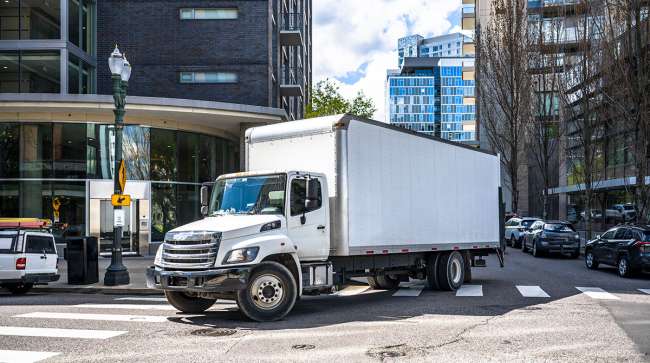Staff Reporter
Trucking Experts Prepare for Lackluster Peak Season

[Stay on top of transportation news: Get TTNews in your inbox.]
Trucking industry experts are expecting a modest peak shipping season due to freight demand and inventory trends.
“My assessment is this is not likely to be a very gangbuster peak season,” said Avery Vise, vice president of trucking at FTR Transportation Intelligence. “I think it’s going to be better than certainly a lot of people expected. But I don’t think we’re going to look back at the peak season of 2023 and say that was a really good year. I think it’s going to be fairly modest.”
The Uber Freight Q3 Market Update and Outlook Report noted Aug. 9 that a year-over-year increase in durable goods of 4.7% helped overall goods spending inch up in Q2. But looking ahead the report forecasts weakness in the coming months because of backlogs and new orders from manufacturers. It also found retail and wholesale inventories are down year-over-year, excluding the automotive sector. But wholesale durable goods inventories remain high relative to sales.
“I would say last year there was no peak season,” American Trucking Associations Chief Economist Bob Costello said. “It was nonexistent. It didn’t happen at all. This year we can do better than that, but I don’t think it’s going to be back to quote-unquote normal.”

Costello
Costello pointed to the shift back to services from goods as a major reason for the slow growth. During the COVID-19 pandemic, people were going out less, causing consumer spending to favor goods. But activities such as concerts, vacations and eating out have since made a comeback.
“We’re on the flip side of that and have been for a while, and that’s why freight has been in a recession,” Costello said. “The macro economy is not in a recession, but the freight market has been in a recession, including truck freight. That’s because people are, in fact, traveling a bunch, going on vacations. But it’s more than that. This summer, concerts have been crazy.”
Costello noted retail inventories are in better shape this year because of destocking efforts. The focus has been on the general merchandise or big box retailers. But the same can’t be said about wholesale inventories since they are still elevated relative to sales. Vise agreed while adding that retail inventory levels basically have normalized at this point.

“We do have a lot of inventory, especially in the wholesale sector,” Vise said. “Wholesale inventories right now are running at the highest level relative to sales since the Great Recession.”
Vise noted freight demand could be helped by an increase in retail inventory replenishments. But he also sees possible headwinds, such as student loan repayments restarting, which he suspects is going to have some negative impact on spending in the fall.
“I guess the headline is a soft shipping season in terms of demand,” said Paul Bingham, director of transportation consulting at S&P Global Market Intelligence. “We’re not in a recession, so we’re not in a period of below-trend consumption and therefore shipping activity. However, there’s some big factors in comparison, one of which is just comparing against 2022 or 2021, when we had the pandemic-driven incredible growth in demand and shipping activity. Then we still have an overhang of inventory.”

Bingham
S&P Global Market Intelligence has recently revised its forecast for gross domestic product this year up to 2.3% despite a tightening of monetary policy. Bingham pointed to relatively low unemployment as a major reason why. But when it comes to freight, he warned inflation is causing nominal growth to be about 4% higher than real shipments.
“The demand for shippers to move the goods depends somewhat on the category but, overall, is showing growth,” Bingham said. “That’s because the underlying demand from the consumer has actually been quite resilient. Consumers have spent and continue to spend on goods this year but on an inflation-adjusted basis, and that’s an important footnote. If you just look at the nominal dollar values, they look stronger than the actual real shipments.”
The BlueGrace Logistics Confidence Index found 64% of shippers were optimistic about revenue growth during the fourth quarter. That compared with 83% during the year-ago period. But there was a slight increase from 62% the previous quarter. It also noted that 27% of shippers were neutral about revenue growth, while 8% had a negative view.

Transport Topics' Seth Clevenger, Michael Freeze and Mike Senatore dissect the new Top 100 list of the largest private carriers, including how fleets are adapting to this softened market. Tune in above or by going to RoadSigns.ttnews.com.
“I think the results are not necessarily surprising,” said Jason Lockard, senior vice president of managed logistics at BlueGrace Logistics. “From a revenue standpoint, it’s not as bullish as what everyone thought last year. Going into Q4 ’22, everyone was pretty excited about that, and it looks like it’s a slight shift to more neutral.”
BlueGrace Logistics ranks No. 73 on the Transport Topics Top 100 list of the largest logistics companies in North America.
“Due to the current Panama Canal drought, shippers need to account for longer sailing times as well as plan to order goods earlier than before,” said Pawan Joshi, executive vice president of products and strategy at E2open. “Ordering goods earlier also leads to higher chances of forecasts missing the mark on things [like] seasonal trends and consumer behaviors.”
Want more news? Listen to today's daily briefing below or go here for more info:

